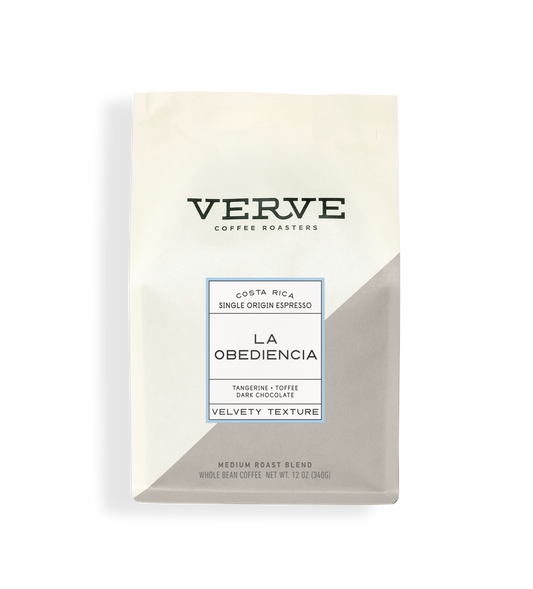Understanding Coffee Beans: the Journey From Espresso to Blended Coffee Beans

The Beginnings of Coffee: A Worldwide Perspective
While you may assume of coffee as a contemporary staple, its origins trace back centuries, linking with societies throughout the globe. The tale starts in Ethiopia, where tale claims a goat herdsman called Kaldi uncovered the invigorating impacts of coffee beans after discovering his goats frolicking vigorously after consuming them.
As trade paths expanded, coffee made its way to Europe in the 17th century, quickly gaining popularity. It changed from a mystical beverage right into an everyday routine, intellectual exchanges and inspiring events. Each culture included its one-of-a-kind spin to coffee preparation, enriching its background. This worldwide journey highlights how coffee attaches us, transcending borders and uniting diverse traditions through an easy bean.
Growing and Harvesting of Espresso Beans
As coffee's journey progressed, the focus moved to the growing and harvesting of particular bean ranges, especially those utilized for coffee. You'll locate that espresso beans commonly originate from Arabica or Robusta plants, each offering distinct tastes. The suitable expanding problems consist of high elevations and rich, well-drained soil, which enhance the beans' quality.
Throughout the harvest, selecting techniques vary. In some regions, workers hand-pick ripe cherries, making certain just the ideal fruit goes to processing. In other areas, mechanical harvesters are made use of, specifically on larger farms. When the cherries reach peak perfection for optimum taste., timing is important; you want to collect.
As soon as harvested, the beans are prepared for processing, which is vital in establishing their final preference. Recognizing the farming and collecting procedures gives you understanding right into what enters into your favorite espresso, improving your recognition for each mug.
Processing Approaches: From Cherry to Bean
Since you have actually found out about gathering coffee beans, let's check out how those cherries change into the coffee beans you love. You'll see just how different harvesting methods impact taste, followed by the essential steps of fermentation and drying out. We'll break down the milling and grading process that determines your coffee's high quality.
Harvesting Methods Explained
When it comes to coffee, understanding harvesting strategies is crucial, given that they straight impact the flavor and top quality of the beans you delight in. Discerning choosing entails hand-picking only ripe cherries, guaranteeing you obtain the finest high quality beans. Eventually, the option of gathering method can considerably affect your coffee experience, so it's worth knowing how those beans made it to your cup.
Fermentation and Drying
After collecting, the next action in handling coffee beans play a significant duty fit their flavor. You'll discover that fermentation is essential, as it helps damage down the mucilage surrounding the beans, improving their preference profile. Depending upon the technique, this process can last from a few hours to several days, with varying results based upon temperature level and humidity.
Once fermentation is full, drying out complies with, which is equally essential. You can choose from sun-drying or mechanical drying approaches. Sun-drying enables the beans to soak up tastes from the setting, while mechanical drying out guarantees regular moisture levels regardless of weather. Appropriate drying is necessary to avoid mold and mildew and preserve the beans' quality, ultimately influencing your cup of coffee.
Milling and Grading Refine
As fermentation and drying out established the stage for flavor advancement, the milling and grading procedure warranties that just the ideal coffee beans make it to your cup. This stage includes eliminating the outer layers of the coffee cherry, including the parchment and husk. High-quality beans receive a greater quality, resulting in a richer coffee experience.
Roasting Strategies: Unlocking Taste Possible
When you roast coffee beans, the technique you choose can dramatically affect the taste account. Recognizing the relationship between time, temperature, and roasting methods is crucial to disclosing the possibility of your mixture. Let's explore exactly how these components collaborated to create the ideal mug.
Roasting Techniques Clarified
While you could believe that all coffee toasting techniques yield the very same results, the fact is that each technique discloses distinct taste capacities in the beans. Drum toasting makes use of a revolving drum to uniformly distribute heat, enhancing caramelization and producing a balanced taste. Air roasting, on the various other hand, flows warm air around the beans, advertising a lighter roast with pronounced acidity.

Influence On Taste Account
Different roasting approaches not just affect the process but additionally considerably influence the flavor profile of the coffee beans. Dark roasts, on the other hand, bring out vibrant, smoky tastes, sometimes masking the bean's special attributes. Recognizing these subtleties assists you value the creativity behind your mug of coffee, improving your general experience with every sip.
Time and Temperature Level Variables
To launch the complete flavor capacity of coffee beans, both time and temperature level throughout the toasting procedure play substantial roles. When roasting, you'll discover that greater temperature levels can quickly develop tastes, but if you rush it, you could end up with scorched notes. On the other hand, reduced temperature levels enable a more progressive flavor advancement, showcasing the beans' one-of-a-kind qualities.

Timing is just as essential; prolonging the roast as well long can cause a loss of level of acidity and illumination, while also brief a roast might leave the beans underdeveloped. Finding that sweet spot needs method and testing. By readjusting these variables, you can disclose the abundant, complex flavors concealed within each bean, creating a genuinely impressive coffee experience.
The Art of Blending: Crafting One-of-a-kind Coffee Profiles

Begin by choosing a base coffee that offers a strong foundation. A bright Ethiopian bean can bring fruitiness, while an abundant Brazilian coffee adds body.
As you blend, bear in mind that each mix narrates. You're not just making coffee; you're developing an experience. So, take your time, taste regularly, and appreciate the trip of discovering your trademark blend.
Brewing Techniques: Just How Prep Work Affects Flavor
Blending coffee opens up a domain name of taste possibilities, yet just how you make that mix can substantially affect your final cup. On the other hand, click to read more a pour-over highlights the coffee's quality and illumination, perfect for showcasing delicate notes.
Espresso, with its high stress, produces a focused shot that accentuates sweet taste and crema. If you like a lighter brew, take into consideration a chilly brew approach; it yields a smooth, much less acidic taste.
Inevitably, testing is key. Changing variables like water temperature, grind dimension, and brew time can change your coffee's profile. Embrace the art of developing to find the flavors concealed in your coffee blends. The right technique can boost your experience to brand-new heights.
The Future of Coffee: Sustainability and Development
As the coffee industry progresses, sustainability and development are becoming important for dealing with ecological challenges and conference consumer needs. You'll notice that even more coffee companies are taking on environment-friendly practices, from sourcing beans morally to implementing lasting farming techniques. These changes not only help the earth however additionally enhance the high quality of the coffee you delight in.
You could see developments like biodegradable product packaging and water-saving developing techniques that minimize waste. Advanced technology, such as blockchain, is likewise ending up being preferred, ensuring transparency in the supply chain, which allows you to trace your coffee back to its origins.
Additionally, buying local communities and supporting farmers through fair trade initiatives fosters a more sustainable coffee ecosystem. As you sip your next cup, keep in mind that your options can add to a brighter future for coffee. By choosing lasting brand names, you're not simply taking pleasure in a beverage; you're making a positive effect on the world.
Regularly Asked Questions
What Is the Difference Between Arabica and Robusta Beans?
Arabica beans are smoother, sweeter, and have a higher level of acidity, while robusta beans are more powerful, more bitter, and contain even more caffeine. You'll discover these distinctions in flavor and aroma when making your coffee.
How Does Elevation Affect Coffee Bean Flavor?
Elevation effects coffee bean flavor substantially. Greater elevations generate beans with brighter level of acidity and complex tastes, while lower altitudes commonly produce beans that are much heavier and less nuanced. You'll observe these differences in your cup!
What Are the Health Perks of Drinking Coffee?
Consuming coffee can boost your power, boost mental emphasis, and also boost physical performance. It's abundant in antioxidants, might reduce the threat of specific conditions, and can promote a much healthier metabolic process when eaten in moderation.
Can Coffee Beans Be Recycled for Brewing?
Yes, you can recycle coffee beans for brewing, yet the taste may be weak. If you take pleasure in exploring, attempt recycling them in various methods, like cool brews or adding to smoothies for an added kick.
Just how Should I Store Coffee Beans for Freshness?
To maintain your coffee beans fresh, keep them in an impermeable container in a cool, dark area. Prevent exposing them to dampness, heat, or light, as these elements can swiftly weaken their taste and fragrance.
Comprehending Coffee Beans: the Journey From Espresso to Blended Coffee Beans.
Currently that you have actually discovered concerning collecting coffee beans, allow's discover just how those cherries change right into the coffee beans you love.When you roast coffee beans, the method you choose can dramatically impact the flavor profile - Single Origin Espresso.While you may think that all coffee roasting techniques produce the exact same outcomes, the fact is that each strategy discloses one-of-a-kind taste possibilities check out here in the beans.Various roasting techniques not only influence the procedure yet additionally substantially influence the taste account of the coffee beans
Comments on “A Beginner’s Guide to Understanding SOE Single Origin Espresso”